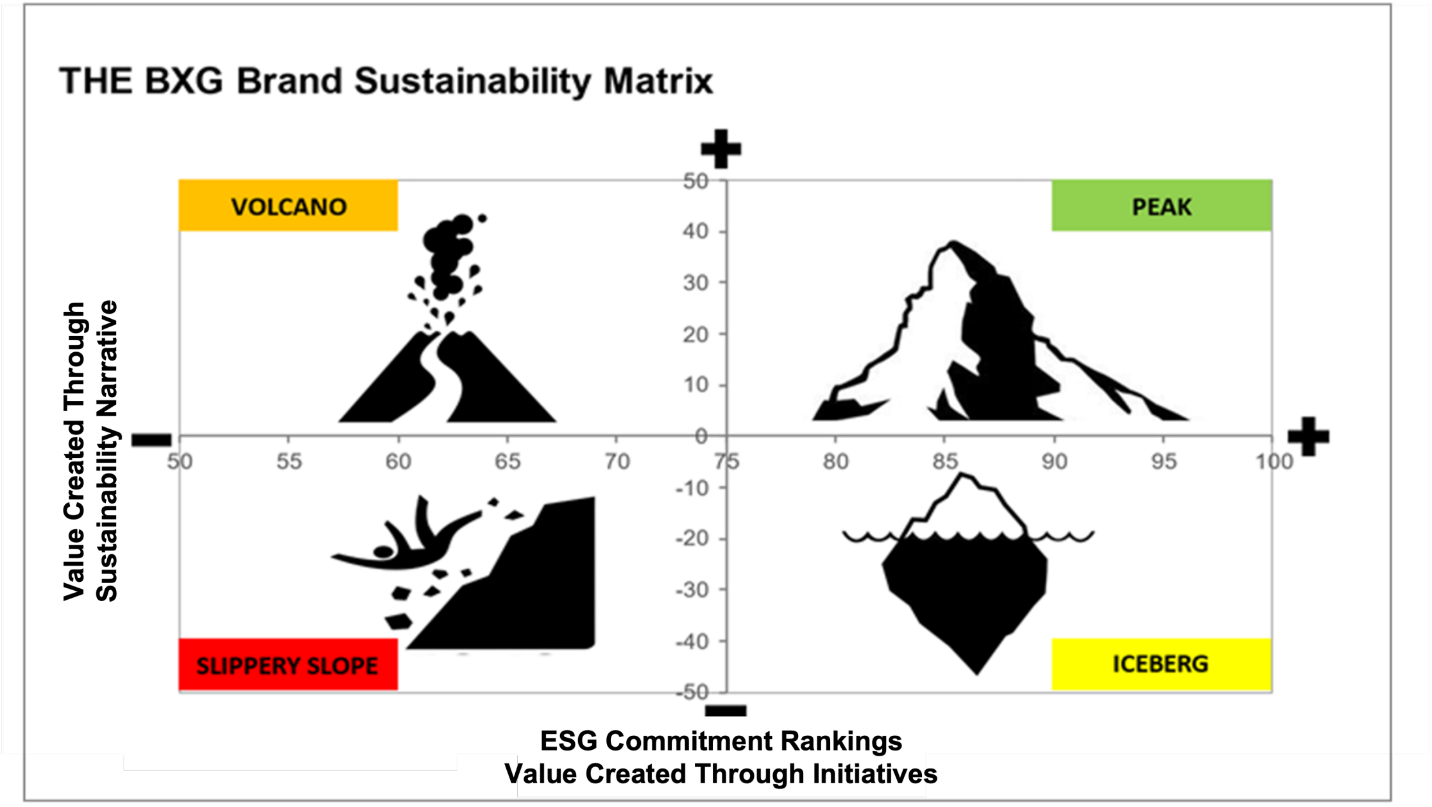
The race to become the most sustainable brand in the category requires ambitious work in all the company's functions. A sustainability strategy for managing and prioritizing sustainability work is closely linked to other organizational strategies - business strategy, innovation strategy, production strategy, etc.
In Part1, I introduced the Brand Sustainability Matrix with its 4 different fields.

This text focuses on describing the journey north, i.e. how to increase the efficiency of the work of getting the sustainability narrative to prioritized stakeholder groups. Our analysis of the brands that are most successful in positioning themselves as "Peak brands" reveals a few different principles.
Basic principles - Focus, Relevance, Unique
Focus: Let us begin by stating that the same principles that have applied to successful brand building at all times also apply to sustainability. It may seem like an unnecessary statement, but if you study how many companies communicate about sustainability, you realize the need for a reminder of what everyone already knows.
Under the heading "Sustainability" on companies' websites, you too often see long lists of activities with which the company describes its initiatives in sustainability. It is not unusual that companies take the UN´s Sustainability Development Goals as their framework to report their commitments. Sometimes a smaller number of goals, sometimes as many as 7 or 8 are selected. Everyone who works with brands knows that it is not possible to link 7-8 different messages or benefits to a brand. As early as the 1990s, the gurus of the time, Ries & Trout, stated that "the most powerful concept of marketing is owning a word in the prospect’s mind". Why do many make the same mistake they made 30 years ago?
Relevance is as obvious as Focus, just like in all brand communications. Our measurements clearly show that different groups of consumers prioritize different areas within sustainability. The sustainability issues that are most relevant to the brand's target group must be taken as a starting point for the narrative. If the target group is passionate about gender equality, one should perhaps not focus on recycled packaging. Everyone understands the importance of Uniqueness in brand building. However, if you see sustainability as a hygiene factor, you will not strive for a distinctive narrative, which is a big mistake if you want to be a Peak brand.
Advanced Principles - Emotionally Packaged and Integrated
A focused single-minded sustainability narrative must be based on an overall idea that accommodates all prioritized initiatives. All marketers know this, of course, but after studying companies' sustainability communications, it is worth reminding. The overall idea should be emotionally packaged, just like any other brand-building communication. There is a widespread misconception that sustainability can only be packaged with collective emotions such as care and consideration. Sustainability can be loaded with the whole repertoire of emotional expressions - introverted or extroverted, we-oriented or I-oriented - like freedom, joy, intelligence, rebellion, control, etc.
In our measurements, we have found that initiatives that focus on social and human aspects create more commitment than the initiatives that affect the planet, i.e. pure environmental issues. Everyone understands that reducing CO2 emissions is important, but it seems easier to create emotionally differentiating commitment to issues that affect people.
Integrated
Many brands seem to regard their own narrative in sustainability as a side track to the brand's other communications. When sustainability is no longer a hygiene factor, the commitment must support the brand's identity and differentiation. More and more people realize that the company's higher purpose is to do something good for society or the planet and at the same time make a profit. The higher purpose is supported by the company's values and which sustainability goals are mainly focused on.
Volvo Cars is a good example of how it should be packaged. Volvo is transforming its basic brand positioning and heritage (reducing injuries in personal transportation) into a broader meaning of sustainability. It is expressed with a Swedish word "omtanke". "Omtanke" is the Swedish word for care; it is used also in English texts. Through this, they build on their value-based and geographical origins and utilize Sweden's good image as a prominent figure in sustainability. "Care" becomes the conceptual formulation that integrates values, purpose, positioning and sustainability. Care means both caring and thinking again, rethinking.
If you want to discuss how to create a Peak brand, do not hesitate to contact Mats Persson here.
